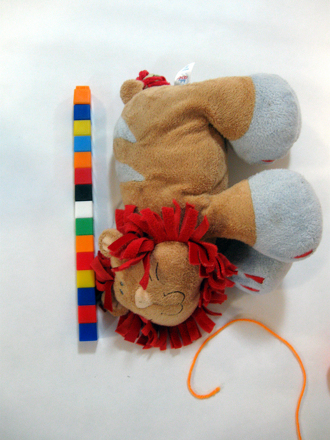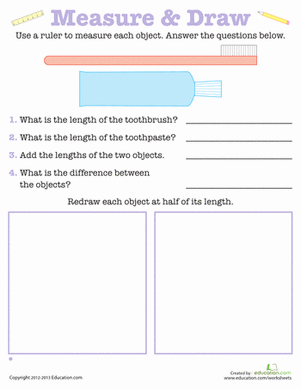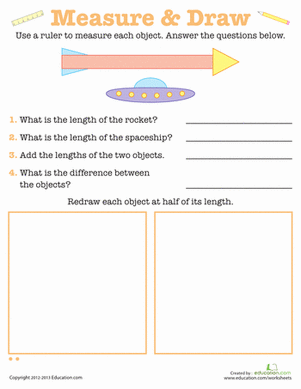Science project
Drum Size and Pitch
Is bigger better when it comes to making a smashing piece of music? See whether having a larger surface to pound changes the pitch that you create.
Materials
- Clear packing tape
- Small, medium, and large metal cans
- Can opener
- Pencil
- Quilt batting
Procedure
- First, you’ll need three differently sized cans to create your music. Ask an adult to help you cut the ends of the cans and wash the insides. Make sure that there are no rough edges that could damage the surface of your drum.
- Now, let’s create those drums! Stand each can so that the hole you made sticks straight up. This end will act as the the opening for your drum.
- Beginning with the smallest can, attach a piece of clear packing tape to one side of the opening and stretch the tape across the opening.
- Secure the tape on the other side.
- Continue to do this until the entire opening of the can is covered in a layer of tight packing tape.
- Secure the ends of the tape by stretching a long piece of packing tape around the diameter of the can.
- Do the same thing with all three cans. Soon, you’ll have three drums to play!
- Now it’s time to create your mallet. You want your mallet to be something that’s easy to pound with but won’t hurt your drum’s surface. Take a pencil and wrap it in a handful of quilt batting.
- Use the packing tape to wrap the batting around the pencil. Make sure that all of the batting is covered in a layer of packing tape.
- Using your mallet, bang each drum in turn. Which drum makes the highest pitch? Which one makes the lowest? If there is a difference, and if so, why?
Results
The larger the diameter of the drum, the lower the pitch of the drum.
Why?
Sound is friendly: it waves. When you hit a surface with a mallet, the surface vibrates, or moves back and forth. This pounding is called percussion. When the surface bounces, it moves the air around it, causing ripples of compressed and stretched air that travel outward from the struck surface toward your ears. That’s all sound really is!
The sound waves enter through your outer ear to your middle ear, where they make your eardrum vibrate, moving the tiny bones in your ear. These bones are called ossicles. These vibrations visit your inner ear, a snail-shaped organ that sends a message to your brain, letting it know that you’ve heard a sound. This sounds like a complicated process, but what’s even more amazing is that it all happens in a fraction of a second!
A sound wave moves through the air, but you can’t see it. If you could, what you’d see would be areas where air particles are pushed together and spread apart. These areas are called areas of compression and rarefaction.
The waves move out from the object that’s making the sound. In this case, it’s your drum. Since they move in a direction that’s parallel to the object, they’re called longitudinal waves.
Pitch is a way of talking about how “high” or “low” a sound is. When you hit a big drum, it makes a lower pitch than a smaller drum might. Hitting a drum applies pressure to the drum. Drums with larger heads (drum surfaces) take longer to wobble back and forth, creating slower vibrations and a lower pitch. If you gave one of your drums a thicker surface or a looser surface, it would also take longer to bounce and would make a deeper sound.
Professional musicians use many different mallets and drums (and even different parts of the drum) to make different sounds. Try this experiment again, hitting different parts of each drum. How does this change the sound? Why do you think it changes? Try the same experiment with different sizes of cymbals or different sizes of pot lids that you hang from the ceiling. Does the same principle hold true when you try the experiment with different materials? How about using a different mallet? How does this change the sound you make?
Education.com provides the Science Fair Project Ideas for informational purposes only. Education.com does not make any guarantee or representation regarding the Science Fair Project Ideas and is not responsible or liable for any loss or damage, directly or indirectly, caused by your use of such information. By accessing the Science Fair Project Ideas, you waive and renounce any claims against Education.com that arise thereof. In addition, your access to Education.com's website and Science Fair Project Ideas is covered by Education.com's Privacy Policy and site Terms of Use, which include limitations on Education.com's liability.
Warning is hereby given that not all Project Ideas are appropriate for all individuals or in all circumstances. Implementation of any Science Project Idea should be undertaken only in appropriate settings and with appropriate parental or other supervision. Reading and following the safety precautions of all materials used in a project is the sole responsibility of each individual. For further information, consult your state's handbook of Science Safety.












